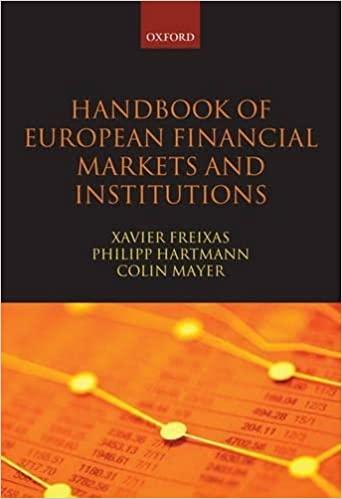Question
1. Consider a bond with a 2-year maturity and annual coupon rate of 3% and face value $ 100 which makes annual coupon payments at
1. Consider a bond with a 2-year maturity and annual coupon rate of 3% and face value $ 100 which makes annual coupon payments at the end of each year. (a) What cash ow does this bond pay at the end of year 1? What cash ow does it pay at the end of year 2?
(b) Suppose the yield to maturity on a 1 year zero coupon bond is 2 % and on a 2 year zero coupon bond is 2.75 %. (These two yields tell you the zero-coupon yield curve.) What is the fundamental value of the coupon bond? The fundamental value is the price the bond would have if there is no arbitrage.
(c) What portfolio of zero-coupon bonds replicates the payo of the coupon bond? Suppose the coupon bond traded at a market price of 100. What is a trading strategy that yields a free prot today in exchange for nothing by exploiting the arbitrage opportunity between the coupon bond and its replicating portfolio?
(d) Suppose we buy the bond today at its fundamental value and hold it to maturity. Why are we unable to compute the holding period return of this trading strategy? What additional information do we need?
(e) Suppose instead the 1 year zero coupon bond had a yield to maturity of 4 % and the 2 year zero coupon bond had a yield to maturity of 5 % and our coupon bonds price equals its fundamental value. Would our coupon bond trade at a premium, at a discount, or at par? Why? (hint: you dont actually have to compute anything to answer this question)
Step by Step Solution
There are 3 Steps involved in it
Step: 1

Get Instant Access to Expert-Tailored Solutions
See step-by-step solutions with expert insights and AI powered tools for academic success
Step: 2

Step: 3

Ace Your Homework with AI
Get the answers you need in no time with our AI-driven, step-by-step assistance
Get Started


